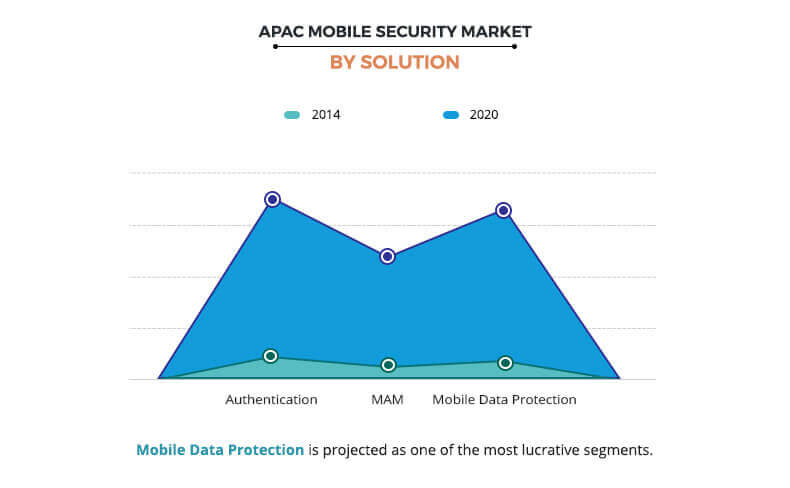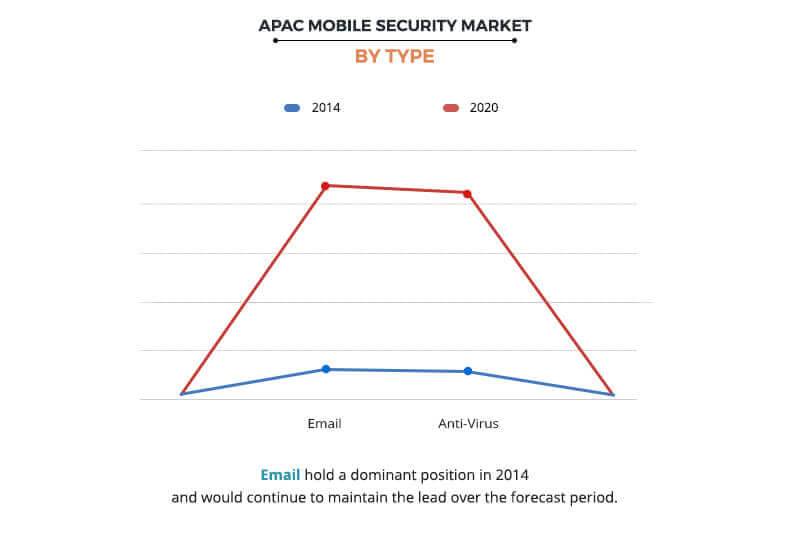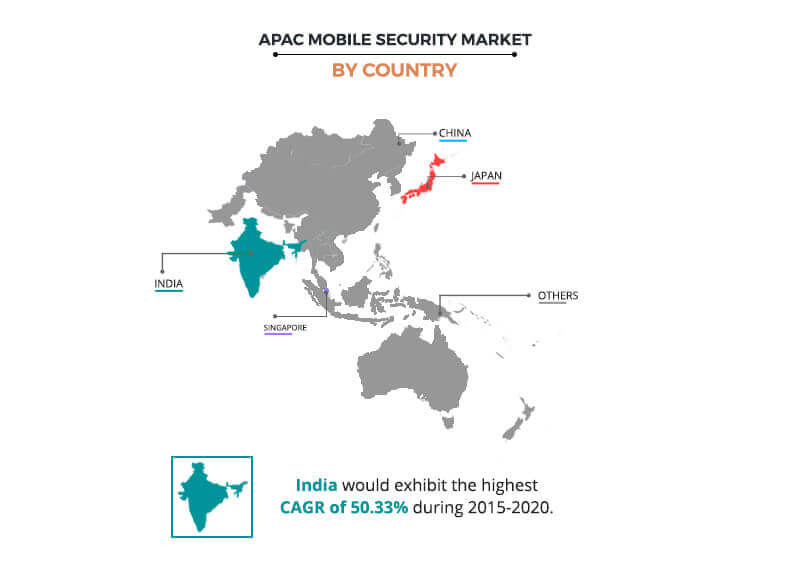Asia-Pacific Mobile Security Industry Analysis:
Asia-Pacific Mobile Security Market is expected to garner $7.5 billion by 2020, registering a CAGR of nearly 43% during the forecast period 2015-2020. Mobile security can be defined as the means by which mobile devices such as smartphones, tablets, laptops and others can authenticate users and protect or restrict access to data stored on these devices. This can be done with the use of passwords, personal identification numbers (PINs), pattern screen locks or more advanced forms of authentication such as fingerprint readers, eye scanners and other forms of biometric readers. Advancement in technology in mobile device market concerning storage, performance, application, capability or internet connectivity have tremendously increased over the past few years. Together with its wide range of uses, it has also fostered a growing need for better security and integrity solutions. Mobile security threats include both physical and software-based threats that can compromise the data stored in smartphones, tablets and other mobile devices. Thus, various security software and hardware solutions such as authentication security, mobile application management and data protection software have been developed by companies. The introduction of BYOD (Bring your own device) policy in various organizations, increasing use of smartphones for conducting day-to-day transactions, rising trend of IoT (Internet of Things), need for data protection and favorable government regulations are major factors triggering the market growth. On the other hand, availability of pirated solutions in the market, deployment cost involved and lack of awareness regarding mobile security systems are likely to restrain the market growth.
On the basis of solutions, Asia-Pacific mobile security market is segmented into authentication, mobile application management and mobile data protection. On the basis of types, the market is segmented into email security and anti-virus. The mobile security market, based on various operating systems is categorized into Android, iOS, Windows, Blackberry and others. Based on the end users, the industry is segmented into individual and enterprise users. Enterprise users segment is further segmented into financial institutions, retail, government, telecommunication and IT, education, manufacturing. automotive, aerospace, defense and intelligence and others. Geographically, the market is segmented into India, Japan, China, Singapore and others (Australia, New Zealand and South Korea).
Leading players and their key business strategies have been analyzed in the report in order to gain a competitive insight into the market. Key players covered in the report include IBM, Symantec Corporation, Kaspersky Lab, VMware Inc., Microsoft Corporation, Google Inc. and others.
KEY BENEFITS
- The study provides an in-depth analysis of the mobile security market in Asia-Pacific region with current and future trends to elucidate the imminent investment pockets in the market
- Current and future trends have been outlined to determine the overall attractiveness and to single out profitable trends to gain a stronger foothold in the market
- The report provides information regarding key drivers, restraints and opportunities with impact analysis
- Quantitative analysis of the current market and forecast during the period of 20152020 have been provided to highlight the financial appetency of the market
- Porters five forces model analysis of the industry illustrates the potency of buyers and suppliers participating in the market
- Value chain analysis in the report provides clear understanding of the roles of stakeholders involved in the value chain
Asia-Pacific Mobile Security Market Report Highlights
| Aspects | Details |
| By SOLUTION |
|
| By End User |
|
| By Type |
|
| By Opreating System |
|
| By Geography |
|
| Key Market Players | VMware Inc., Apple Inc., MobileIron, innoPath Software, Kaspersky Lab, Intel Corporation, INTERNATIONAL BUSINESS MACHINES (IBM) Corporation, GOOGLE INC., Symantec Corporation, MICROSOFT CORPORATION |
Loading Table Of Content...







